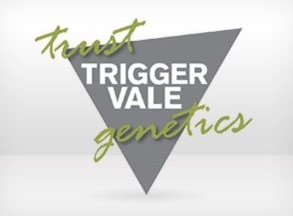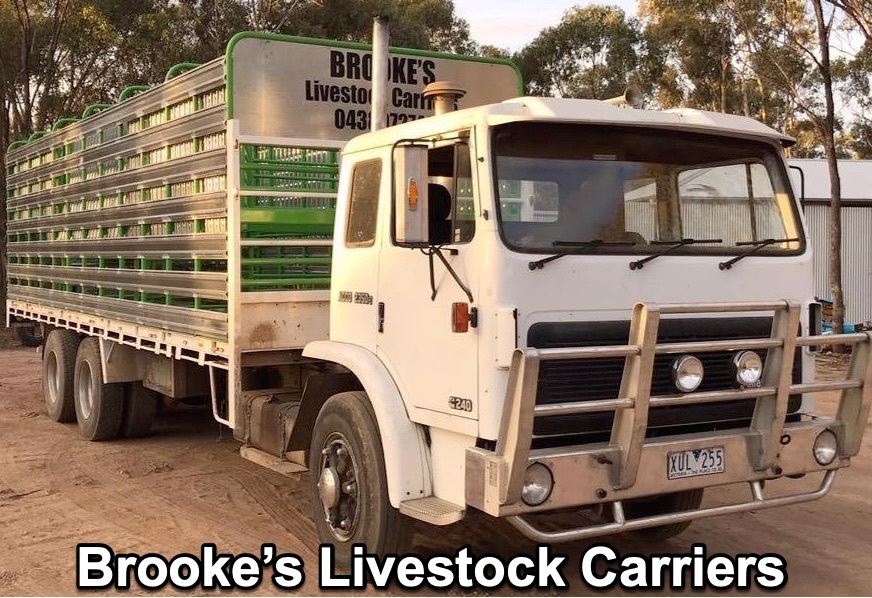
This article is bought to you by Trigger Vale Sheep Studs and Brooke's Livestock Carriers.
One of the biggest topics in regenerative agriculture is well-managed livestock, but few sources have broken down what that means for the average consumer. Here's a crash course.
Consumers are more curious than ever about where their food comes from and how their dietary choices may impact the environment and animal welfare. Regenerative agriculture is gaining momentum as a solution to many of the existing challenges that are facing global food production - how do we produce more food while using fewer resources and regenerating the ecosystems that have largely been depleted over the past century due to harsh, yield-focused farming practices? Is "grass-fed" beef really enough, or is the answer deeper than that?
One of the key tenets of regenerative agriculture is well-managed ruminants. For most consumers, however, these phrases fail to paint a clear picture of what we mean when we say that livestock are part of the solution to achieving a better food system. Here is a layperson's guide to understanding what we mean when we say well-managed livestock are fundamental to achieving better meat.
Why is moving livestock so important?
Oddly enough, the key to well-managed ruminants has more to do with where the cattle aren't allowed to graze than it does with the animals themselves. Many livestock producers have started referring to themselves as grass farmers to help the public understand that producing meat isn't just about the cow, it's about the how.
Adaptive grazing - also sometimes referred to as management intensive grazing, holistic planned grazing, mob grazing, cell grazing, multi paddock adaptive grazing, or controlled grazing - is a system that producers use to accomplish a variety of management goals. Each of these terms may have a slightly different take on how to achieve proper management, but they largely are all aimed at ensuring that pastures receive enough rest between grazing to allow the forage adequate time to regrow while improving other ecological factors like soil health.
Ad - Trigger Vale Sheep Studs After a successful Sale, flock Rams are now available - Ad
Ad - Brooke's Livestock Carriers - If you want someone to look after your valuable Sheep and Cattle then Brooke's are the ones - Ad
This is in comparison to a continuous grazing system where livestock have complete, unfettered access to an entire pasture. When left to their own choice, livestock will preferentially graze their favorite forages while leaving less tasty ones ungrazed. Just like you and me, livestock have favorite foods. A pasture isn't just "grass" - it's many different species of plants. When given continuous access to an entire pasture, they will overgraze and kill their favorite plants, and avoid the ones they dislike.
A well-managed adaptive grazing system involves subdividing pastures into smaller paddocks using permanent or temporary fence and rotating livestock through each paddock at an appropriate speed, depending on conditions. The length of time that livestock are left in each paddock can depend on a variety of factors including the time of year, recent weather conditions like drought, how many livestock are in the paddock, and the nutritional needs of the livestock.
Studies have shown that when cattle are given continuous access to a pasture, their grazing efficiency is as low as 30%. But when the pasture is subdivided and the livestock are allowed access to only a certain paddock, grazing efficiency skyrockets to as much as 75%.
Why does adaptive grazing work so well?
As a very general rule of thumb, adaptive graziers aim to take the top half of the existing forage in each paddock and to leave half. Plants rely on photosynthesis to grow. The more leaf surface area that a plant has, the quicker it will be able to regrow after a grazing period. By ensuring that the cattle only take the top half of a pasture, producers can ensure that those plants will rebound during the rest period. As plants photosynthesize sunlight, they expand their root systems. Healthy root systems help those plants transmit nutrients into the soil to feed microbial life. The more abundant a root system is, the healthier the soil will be, and the more carbon will be sequestered.
If plants are grazed down to the soil, which happens often in a continuous grazing system or when a pasture is overstocked, it will take much longer for the plant to regenerate due to the lack of leaf area.
Ad - Trigger Vale Sheep Studs After a successful Sale, flock Rams are now available - Ad
Ad - Brooke's Livestock Carriers - If you want someone to look after your valuable Sheep and Cattle then Brooke's are the ones - Ad
The best part about this aspect of adaptive grazing is its ability to supercharge plants' ability to sequester carbon. Plants pull carbon out of the surrounding air through photosynthesis and turn it into simple sugars that feed the plant. The sugars are also secreted into the soil surrounding the plant roots, which feeds microbes living in the soil. As the microbes die, they lock this carbon into the soil and prevent it from returning to the atmosphere. The healthier a plant and its root systems, the more carbon it can help sequester.
Pastures need the right amount of animal grazing and the right amount of rest. Just like there's a problem with overgrazing, there's also a problem with over-resting. We need farmers to ADAPT to changing conditions.
Adaptive grazing also ensures that manure is spread more evenly through a pasture by methodically grazing cattle through each section in a controlled manner. Manure and urine feed microbial life in the soil, which also supports healthy soil and better plant growth. Healthy soil is critical to regenerating our farmland because it leads to decreased soil erosion, fights runoff, and supports a greater diversity of pasture plants and wildlife.
There are a number of wildlife advantages that adaptive grazing provides, too, including increased habitat and less disturbance in pastures when adequate rest periods are given.
It also has positive impacts on animal health. By rotating to fresh pasture at an appropriate rate, livestock have less exposure to harmful parasites that can lead to severe illness or death. There are chemical dewormers used to treat parasites, but similar to resistance in antibiotics the parasites have developed resistance to chemical dewormers. Proper rest periods for pastures help combat parasites by taking advantage of their natural lifecycle and allowing enough time for parasites to die off before livestock are grazed in the pasture again.
And when it comes to efficiency, many adaptive graziers report that it takes far less time to rotate animals to new pasture than most people think. Once the livestock are used to an adaptive grazing system, which doesn't take long, they're often lined up and waiting readily to move to the next pasture. Adaptive grazing can help lead to low-stress animal handling. The livestock become accustomed to working with people on a regular basis and often act less flighty compared to being managed in a continuous grazing system.
Ad - Trigger Vale Sheep Studs After a successful Sale, flock Rams are now available - Ad
Ad - Brooke's Livestock Carriers - If you want someone to look after your valuable Sheep and Cattle then Brooke's are the ones - Ad .
. 











Share Ag News Via